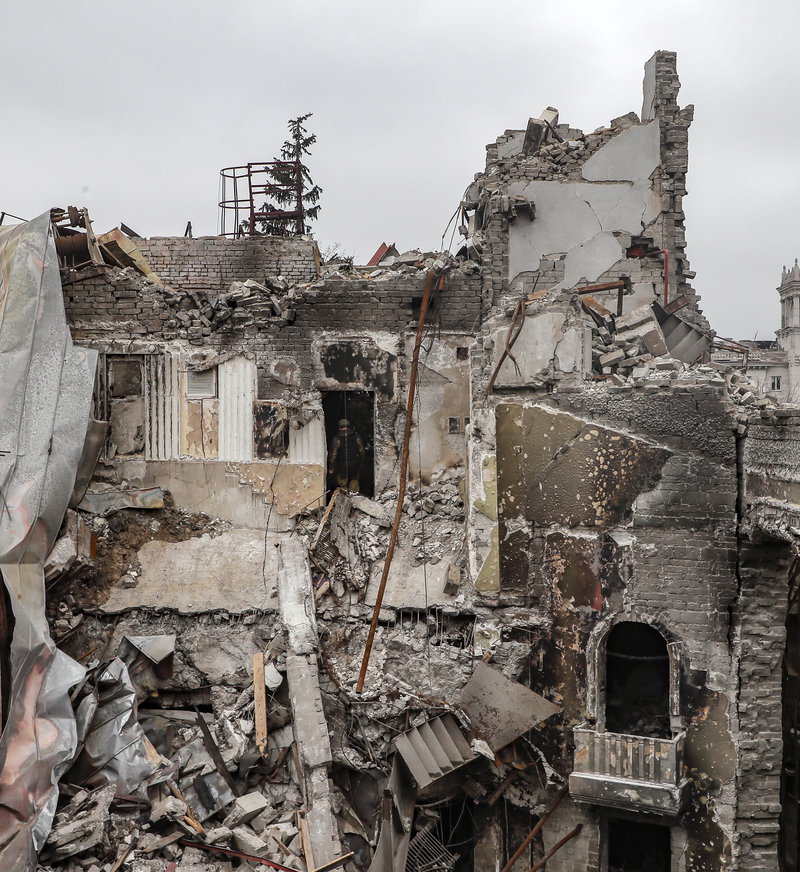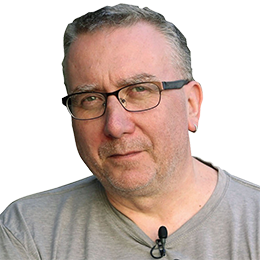Long-term resident
CRUELTY AND THE BEAST
In last month’s issue, Martin Kirby mentioned a book called ‘The Ravine’, a history of the massacres at the Babyn Yar ravine (now inside Kyiv’s city limits) during World War II, where the Germans shot over 100,000 Jews, Soviet POWs and Gypsies between 1941 and 1943.
It was by way of an attempt to understand this capacity of human beings to treat other members of their species as if they were worse than cockroaches, that I started reading about the Shoah when I was seventeen. The 127 books I now have on the subject have come in handy when trying to understand similarly massive atrocities that have taken place in my own lifetime: Cambodia, Rwanda, Bosnia, the DRC, Chechnia, Syria… And yet, now that the atrocities that are still taking place in Ukraine have been confirmed by humanitarian organisations such as HRW and dozens of accredited international journalists, I still find it hard to understand how soldiers from a neighbouring country, 11% of whose population (16.5 million people) have family members in Ukraine, can rape, torture, bomb schools, hospitals and apartment blocks, and kill large numbers of POWs and civilians, including women, children and the elderly.
Then I read the 128th book in my Holocaust collection (‘In Broad Daylight’), about the 1941-43 mass shootings of Jews in Ukraine, Belarus, the Baltic states and occupied Russia (a total of approximately 2 million people, in hundreds of different locations, from large towns to tiny hamlets), known as the ‘Holocaust by bullets’. The book is based on ten years of painstaking research by a French Catholic priest, Father Patrick Desbois, and his team. Not a single detail is spared: the rapes, by Germans, that took place the evening before the murders, the rounding up of the local Jewish population, the march to the freshly dug ditches, the orders to strip naked and lie down in those ditches, the shootings, the killing of babies by swinging them by the feet to pick up enough centrifugual force so as to smash their heads against a tree or a rock, the filling of the ditches (the few survivors were thus buried alive), the looting of the clothes of the murdered.
Because Father Desbois relies either on eyewitness statements by people who saw and sometimes participated in the murders, or depositions from witnesses taken by the German or Soviet authorities only a few years after the events, his book puts readers right into the centre of the horror, as if they were invisible bystanders. The interviewees, over four thousand of them, sometimes weep as they recall the names of friends and neighbours who were murdered, or talk coldly about ‘the Jews’, in a way that suggests it made perfect sense that they were all shot in the back of the head. Whatever the reaction, they make one thing very clear: all the torturing, raping, murdering and looting were carried out not by crazed psychopaths but by people who in any other context would be considered normal.
So why did they do what they did? According to Desbois: ‘A genocide is human beings who murder other human beings while pretending to “save” the world by killing’. To judge from comments made by some of the Russian occupiers to Ukrainian civilians, the former claim to believe they are saving Russia from a Ukraine which has been taken over by ‘Nazis’ and ‘nationalists’. But as Dubois says, in reality they are pretending, because if they really believed what they said, they would fraternise with Ukrainian civilians in the ‘liberated’ areas, having saved them from a ghastly government in Kyiv, instead of murdering, raping and robbing them. As far as Ukraine is concerned, we don’t need a book like Father Desbois’s to feel we’re in the centre of the horror. As Europeans who are alive today, we really are in the centre of it. And in broad daylight, too.


